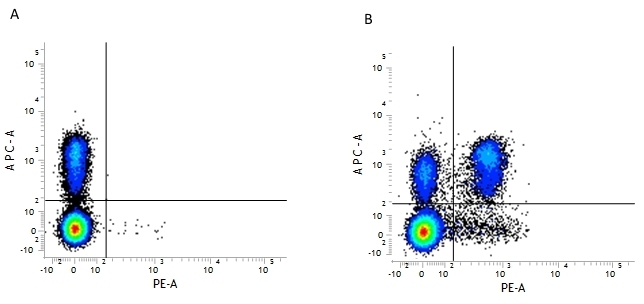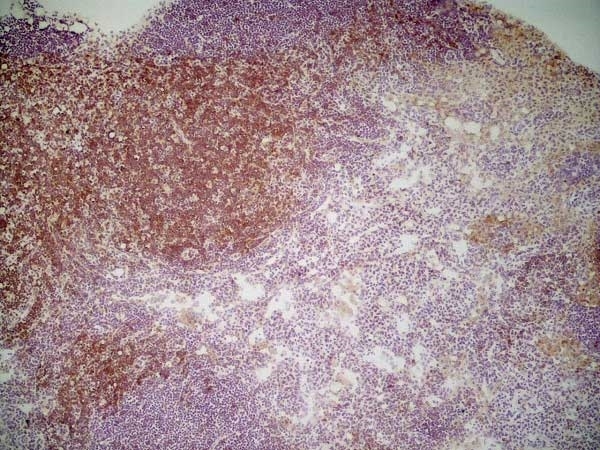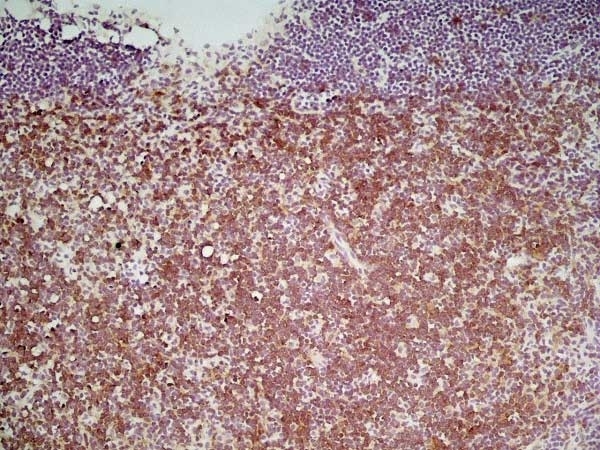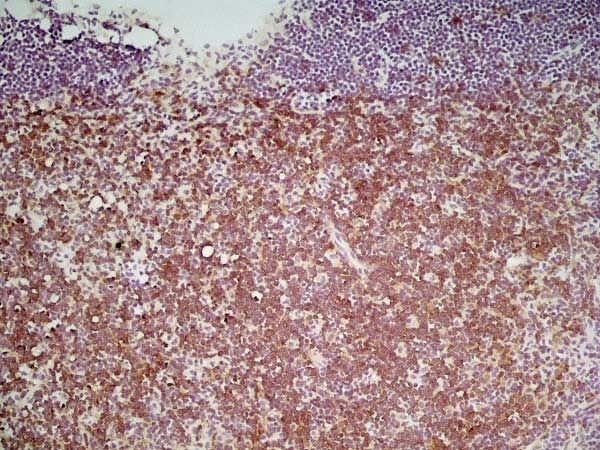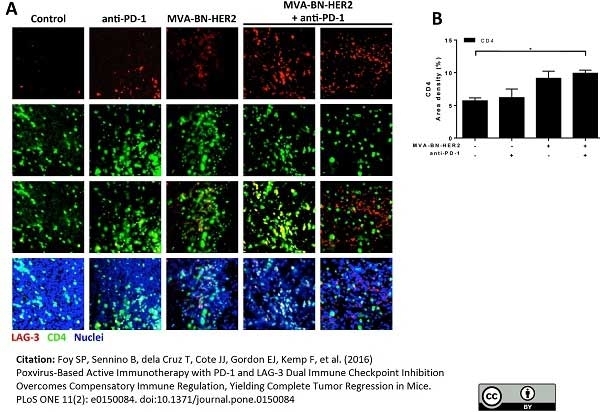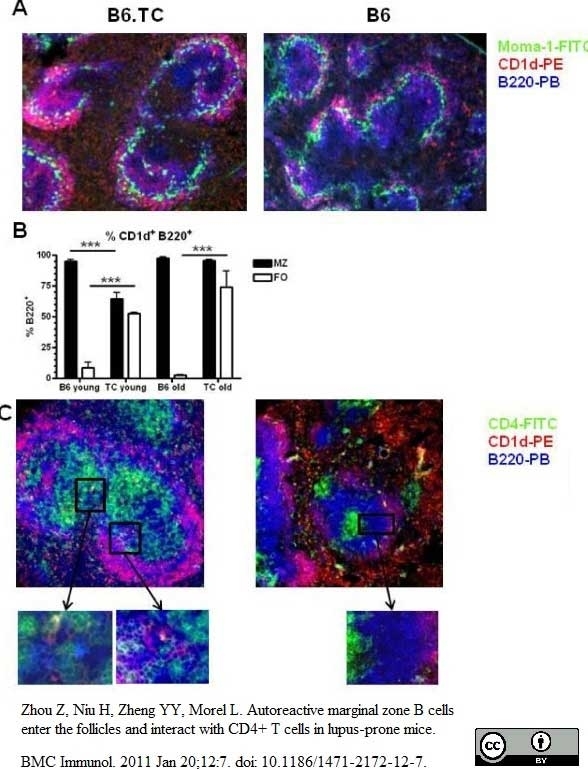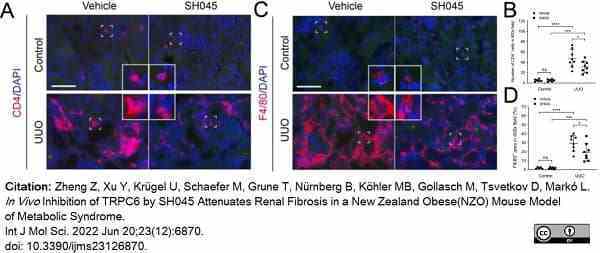CD4 antibody | GK1.5







Rat anti Mouse CD4
- Product Type
- Monoclonal Antibody
- Clone
- GK1.5
- Isotype
- IgG2b
- Specificity
- CD4
| Rat anti Mouse CD4 antibody, clone GK1.5 recognizes mouse CD4, a ~55 kDa protein also known as Ly-4 and L3T4. CD4 is a single chain transmembraneous glycoprotein which belongs to the immunoglobulin superfamily, and is primarily expressed on T helper cells, peripheral blood monocytes and tissue macrophages. CD4 is also expressed on a subpopulation of regulatory T cells (CD4+ CD25+), which play a key role in the maintenance of self tolerance. Rat anti Mouse CD4 antibody, clone GK1.5 has been reported to block CD4+ T-cell activation. It blocks class II MHC antigen-specific binding, thereby inhibiting functions such as class II MHC antigen-specific proliferation and the release of lymphokines. It may also be used for in vivo and in vitro cell depletion of CD4+ T-cells. |
- Target Species
- Mouse
- Product Form
- Purified IgG - liquid
- Preparation
- Purified IgG prepared by affinity chromatography on Protein G from tissue culture supernatant
- Buffer Solution
- Phosphate buffered saline
- Preservative Stabilisers
0.09% Sodium Azide - Carrier Free
- Yes
- Immunogen
- Murine CD4.
- Approx. Protein Concentrations
- IgG concentration 1.0 mg/ml
- Fusion Partners
- Spleen cells from immunised Lewis rats were fused with cells of the SP2/0 myeloma cell line.
- Regulatory
- For research purposes only
- Guarantee
- 12 months from date of despatch
Avoid repeated freezing and thawing as this may denature the antibody. Storage in frost-free freezers is not recommended.
| Application Name | Verified | Min Dilution | Max Dilution |
|---|---|---|---|
| ELISA | |||
| Flow Cytometry | 1/10 | 1/200 | |
| Immunofluorescence | |||
| Immunohistology - Frozen | |||
| Immunoprecipitation | |||
| Western Blotting |
- Flow Cytometry
- Use 10ul of the suggested working dilution to label 1x106 cells in 100ul.
References for CD4 antibody
-
Dialynas, D.P. et al. (1983) Characterization of the murine T cell surface molecule, designated L3T4, identified by monoclonal antibody GK1.5: similarity of L3T4 to the human Leu-3/T4 molecule.
J Immunol. 131 (5): 2445-51. -
Wilde, D.B. et al. (1983) Evidence implicating L3T4 in class II MHC antigen reactivity; monoclonal antibody GK1.5 (anti-L3T4a) blocks class II MHC antigen-specific proliferation, release of lymphokines, and binding by cloned murine helper T lymphocyte lines.
J Immunol. 131 (5): 2178-83. -
Näher, H. et al. (1985) Dynamics of T cells of L3T4 and Ly 2 phenotype within granulomas in murine listeriosis.
Clin Exp Immunol. 60 (3): 559-64. -
Ye, X. et al. (2000) Transient depletion of CD4 lymphocyte improves efficacy of repeated administration of recombinant adenovirus in the ornithine transcarbamylase deficient sparse fur mouse.
Gene Ther. 7 (20): 1761-7. -
Chu, N.R. et al. (2000) Immunotherapy of a human papillomavirus (HPV) type 16 E7-expressing tumour by administration of fusion protein comprising Mycobacterium bovis bacille Calmette-Guérin (BCG) hsp65 and HPV16 E7.
Clin Exp Immunol. 121:216-25 -
Zhou, Z. et al. (2011) Autoreactive marginal zone B cells enter the follicles and interact with CD4+ T cells in lupus-prone mice.
BMC Immunol. 12: 7. -
Pletinckx, K. et al. (2015) Immature dendritic cells convert anergic nonregulatory T cells into Foxp3- IL-10+ regulatory T cells by engaging CD28 and CTLA-4.
Eur J Immunol. 45 (2): 480-91. -
Foy, S.P. et al. (2016) Poxvirus-Based Active Immunotherapy with PD-1 and LAG-3 Dual Immune Checkpoint Inhibition Overcomes Compensatory Immune Regulation, Yielding Complete Tumor Regression in Mice.
PLoS One. 11 (2): e0150084.
View The Latest Product References
-
Steinl, D.C. et al. (2016) Noninvasive Contrast-Enhanced Ultrasound Molecular Imaging Detects Myocardial Inflammatory Response in Autoimmune Myocarditis.
Circ Cardiovasc Imaging. 9 (8): . -
Olesen, M. N. et al. (2018) CD4 T cells react to local increase of α-synuclein in a pathology-associated variant-dependent manner and modify brain microglia in absence of brain pathology
Heliyon. 4 (1): e00513. -
Jalili, R.B. et al. (2018) Fibroblast cell-based therapy prevents induction of alopecia areata in an experimental model.
Cell Transplant. 27 (6): 994-1004. -
Zheng, Z. et al. (2022) In Vivo. Inhibition of TRPC6 by SH045 Attenuates Renal Fibrosis in a New Zealand Obese (NZO) Mouse Model of Metabolic Syndrome.
Int J Mol Sci. 23(12):6870.
Further Reading
-
Dialynas, D.P. et al. (1983) Characterization of the murine antigenic determinant, designated L3T4a, recognized by monoclonal antibody GK1.5: expression of L3T4a by functional T cell clones appears to correlate primarily with class II MHC antigen-reactivity.
Immunol Rev. 74: 29-56.
- Synonyms
- L3T4 Antigen
- LY-4
- RRID
- AB_1898233
- UniProt
- P06332
- Entrez Gene
- Cd4
- GO Terms
- GO:0001816 cytokine production
- GO:0007155 cell adhesion
- GO:0016021 integral to membrane
- GO:0005788 endoplasmic reticulum lumen
- GO:0005789 endoplasmic reticulum membrane
- GO:0006955 immune response
- GO:0007166 cell surface receptor linked signaling pathway
- GO:0009897 external side of plasma membrane
- GO:0045058 T cell selection
- View More GO Terms
- GO:0045121 membrane raft
- GO:0050731 positive regulation of peptidyl-tyrosine phosphorylation
- GO:0050850 positive regulation of calcium-mediated signaling
- GO:0050870 positive regulation of T cell activation
- GO:0051789 response to protein stimulus
Please Note: All Products are "FOR RESEARCH PURPOSES ONLY"
View all Anti-Mouse ProductsAlways be the first to know.
When we launch new products and resources to help you achieve more in the lab.
Yes, sign me up